
Knowledge: Fitting
Fitting:Choose shoes that fit your feet
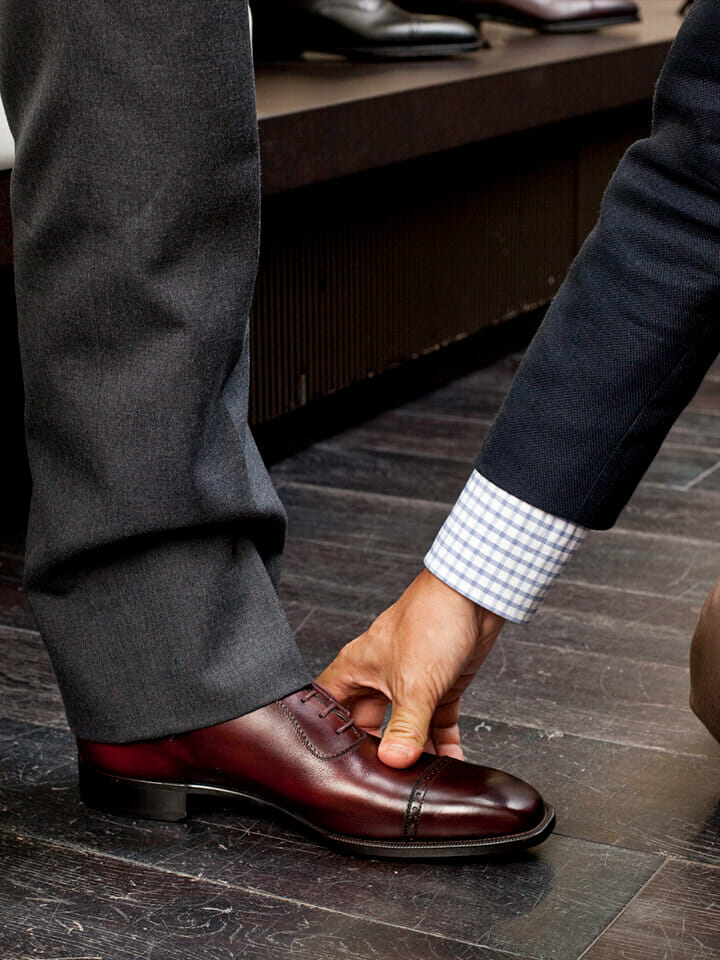
From "Japanese Leather No. 2" published in 2009
It is said that 20% of the force of walking is applied to the feet. In other words, if you weigh 60 kg, that is 72 kg, and it is said that modern people walk an average of 6.5 km a day, which means that you are withstanding a total weight of 540 tons.
The arch, which connects the base of the little finger, the base of the thumb, and the heel, protects the foot from this impact. It acts as a spring that absorbs shock, but its function deteriorates if it is overused. Shoes support this. Knowing the above-mentioned structure, it is important not only to try to wear shoes properly according to the scene, but also to make sure it fits before purchase.
One thing to keep in mind when choosing shoes is knowing your size. Sometimes the self-proclaimed size is unreliable, but the comfort depends on the form and the materials used. Also, just as the facial features are different on the left and right, it is rare for the feet to be uniform on the left and right.
Many might not know this, but the notation may differ from country to country. The shoes are designed to allow the toes to have a margin by taking into account the movement of the foot, which is called the throw-away size. In Japan, the foot-insertion size is indicated, whereas overseas, it is common for the total length of the last to be indicated.
As mentioned above, trying on a shoe is an act that can never be neglected. Tyring on both feet properly and walking is a rule to protect your feet.
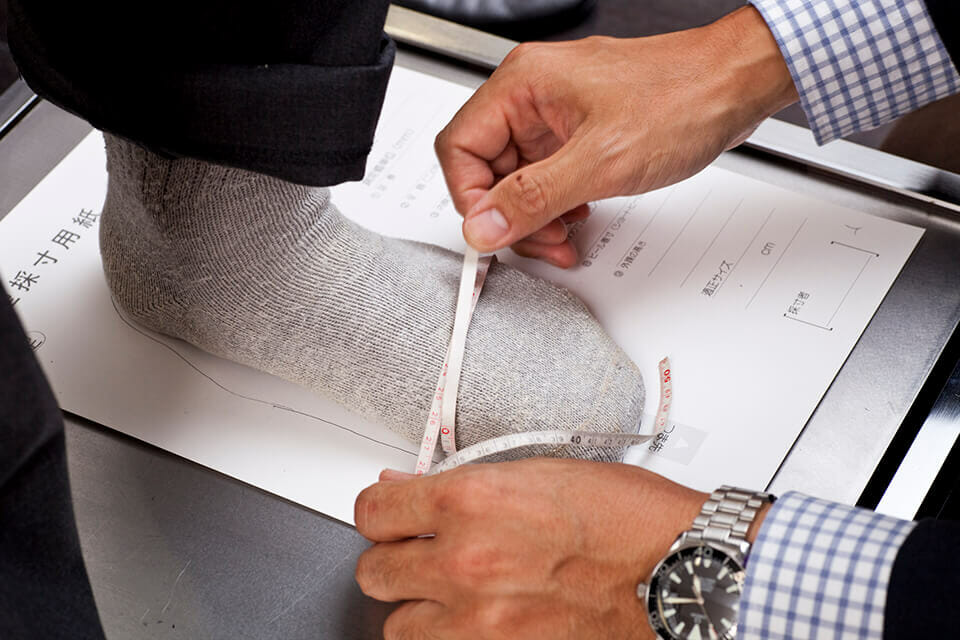
1. Measure the size
As explained in the text, the self-proclaimed size is unreliable. Have your feet measured properly.
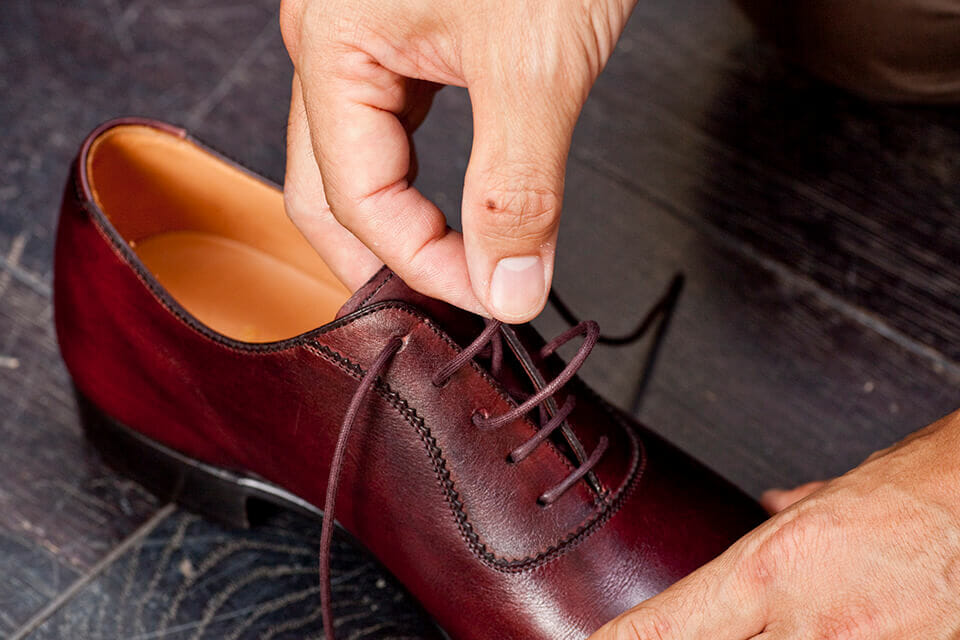
2. Loosen the string
Loosen the laces properly. If you force your foot in, it will shorten the life of your shoes.
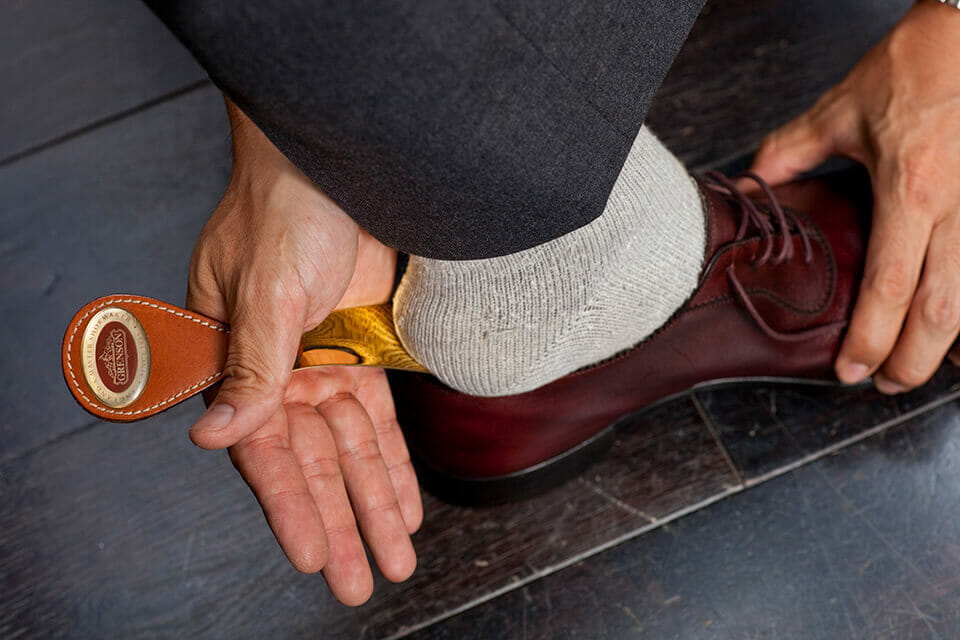
3. Use a shoe horn
Although the heel contains a core material, it is essential to use a shoe horn to protect it.
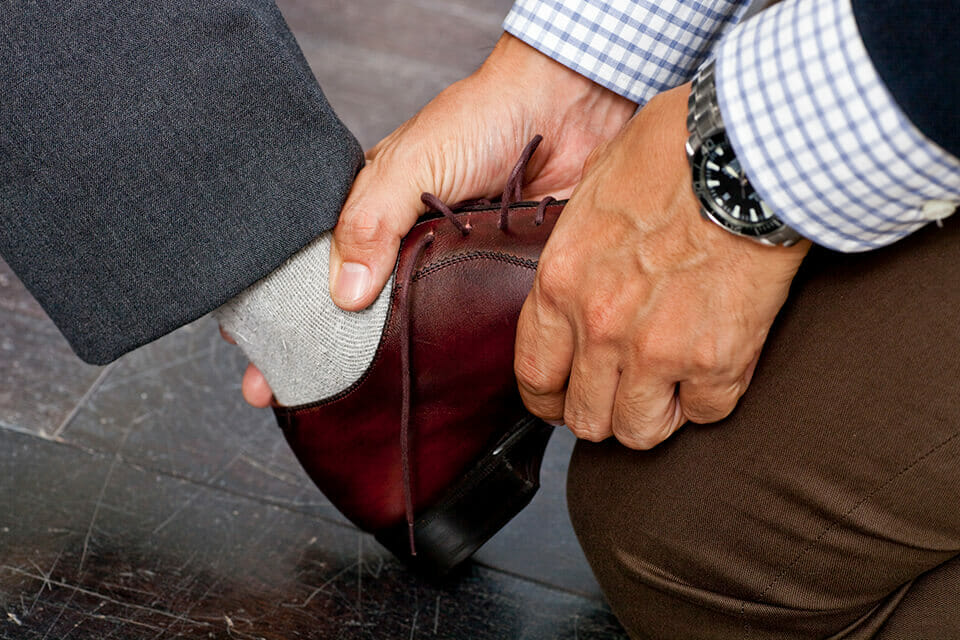
4. Holding the heel
The key to holding your foot is from the heel to the arch. Make sure the heel holds firmly.
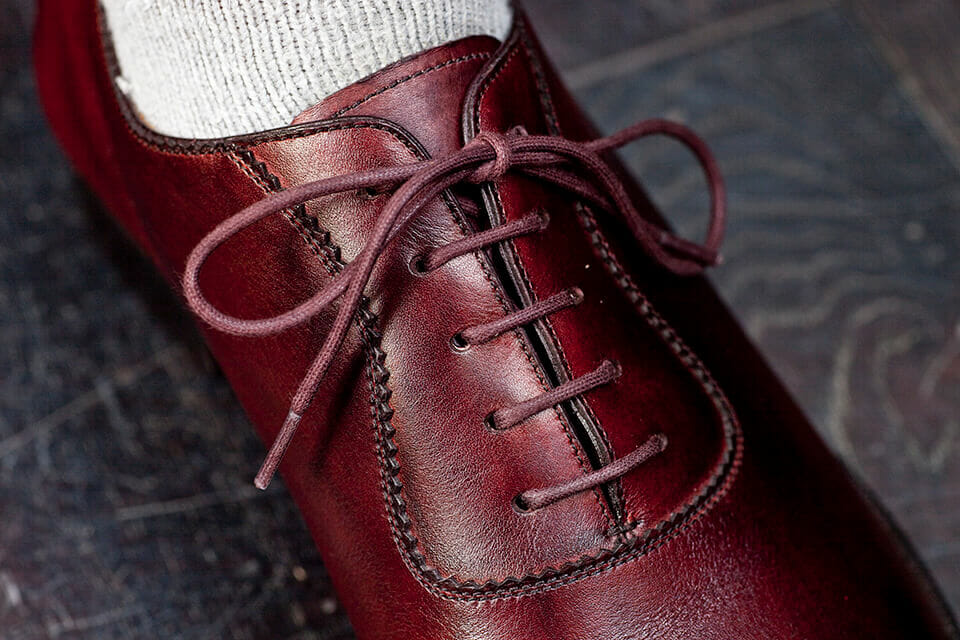
5. See how the eyelet tabs open
Although it depends on the manufacturer, the opening of the eyelet tabs are designed to be around 1 cm.
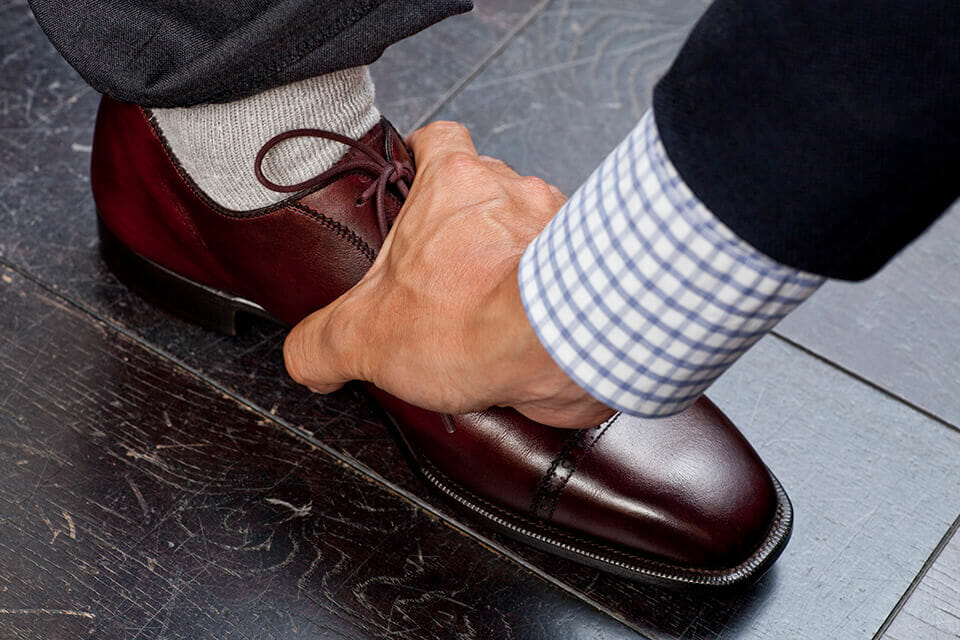
6. The fit of the arch
Check the fit of the arch. If it seems to float, it may cause fatigue, so make sure to check it properly.
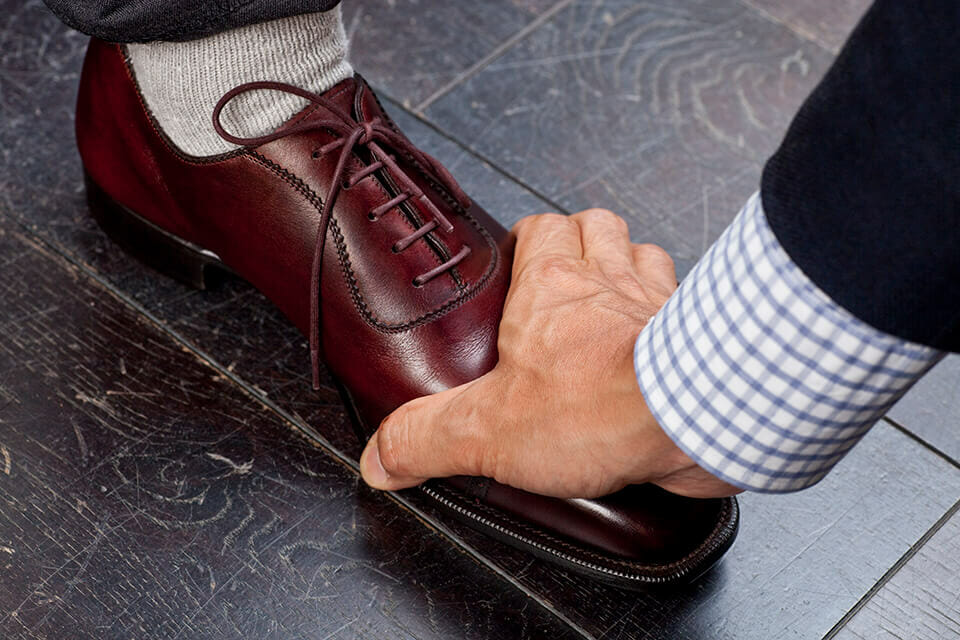
7. Position of ball joint
The part that bends when you step on it. Check if your feet and shoes are aligned.
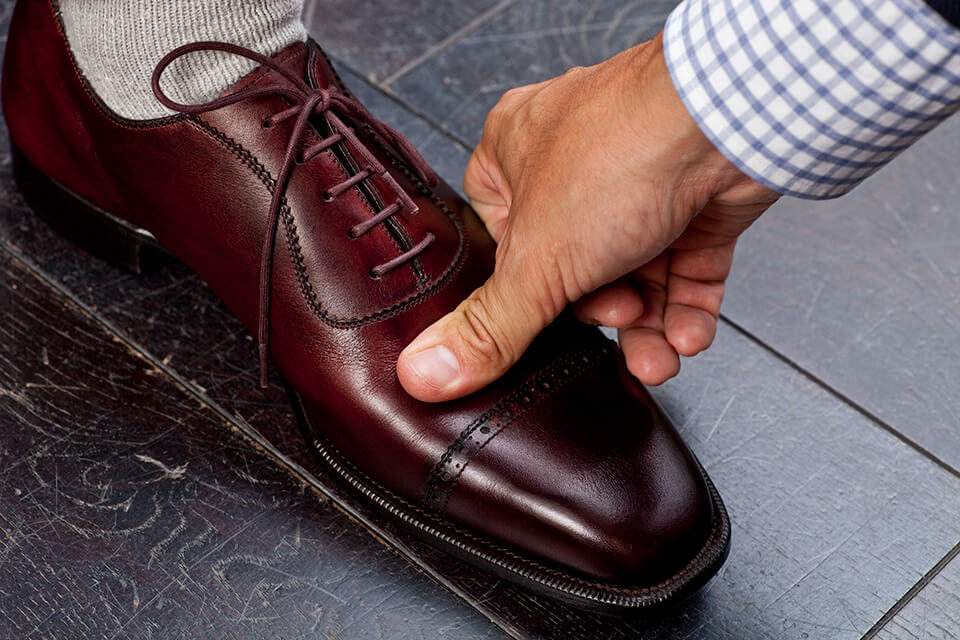
8. Height of ball joint
It is also important that the ball joint has the same dimensions. A good fit is required.
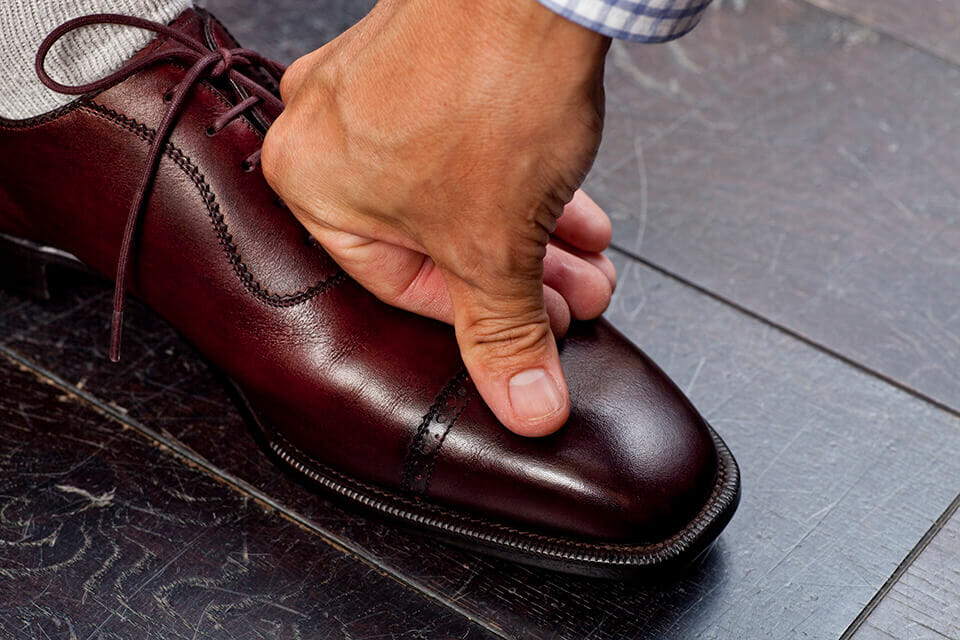
9. How much room you have in your toes
Shoes are made to have a throw away size, make sure that the toes have some wiggle room.

10. Heel fit and top line position
Make sure your heels are aligned and the top line is not hitting your ankle.

11. Check for heel lift and other problems
Actually walk in the shoes, check if there are any problems with the above points, and if there are no problems, it should be ok.